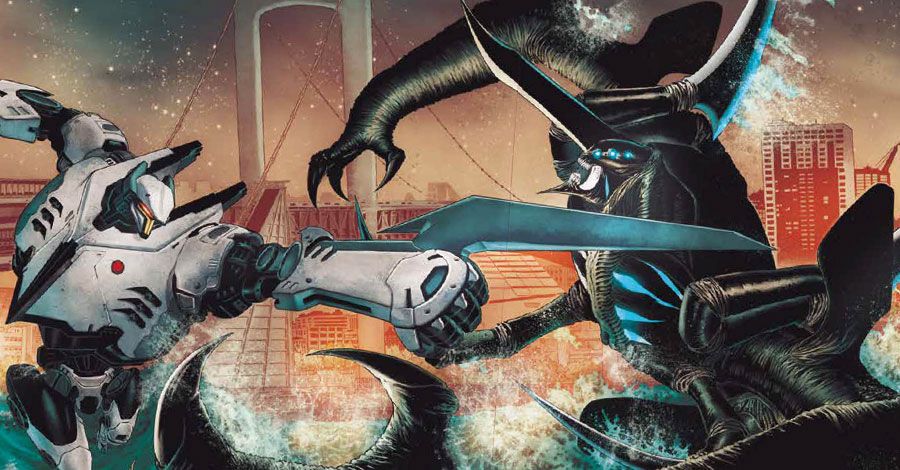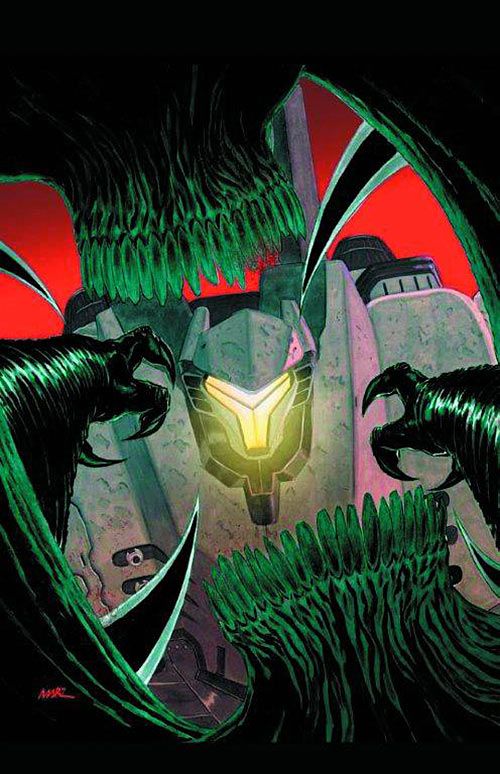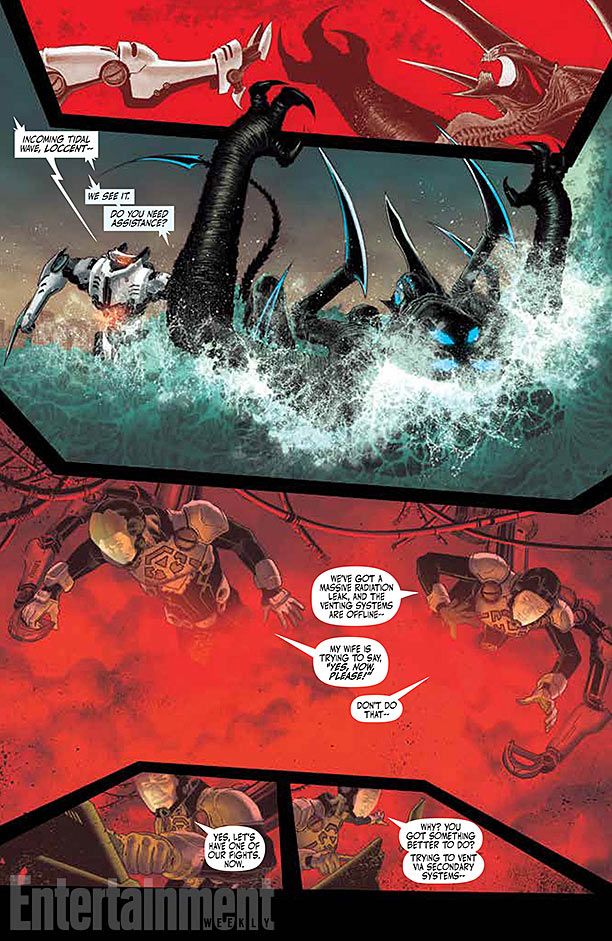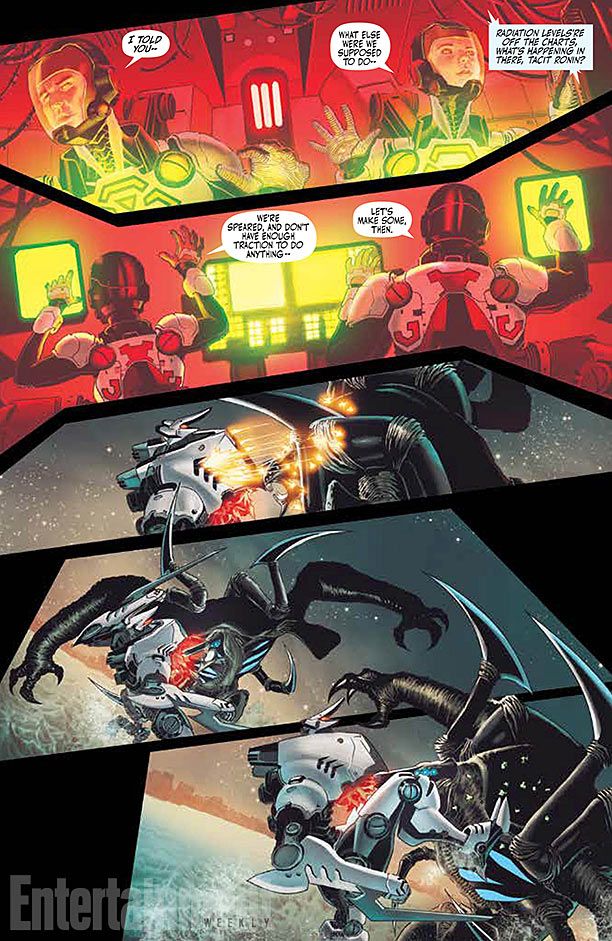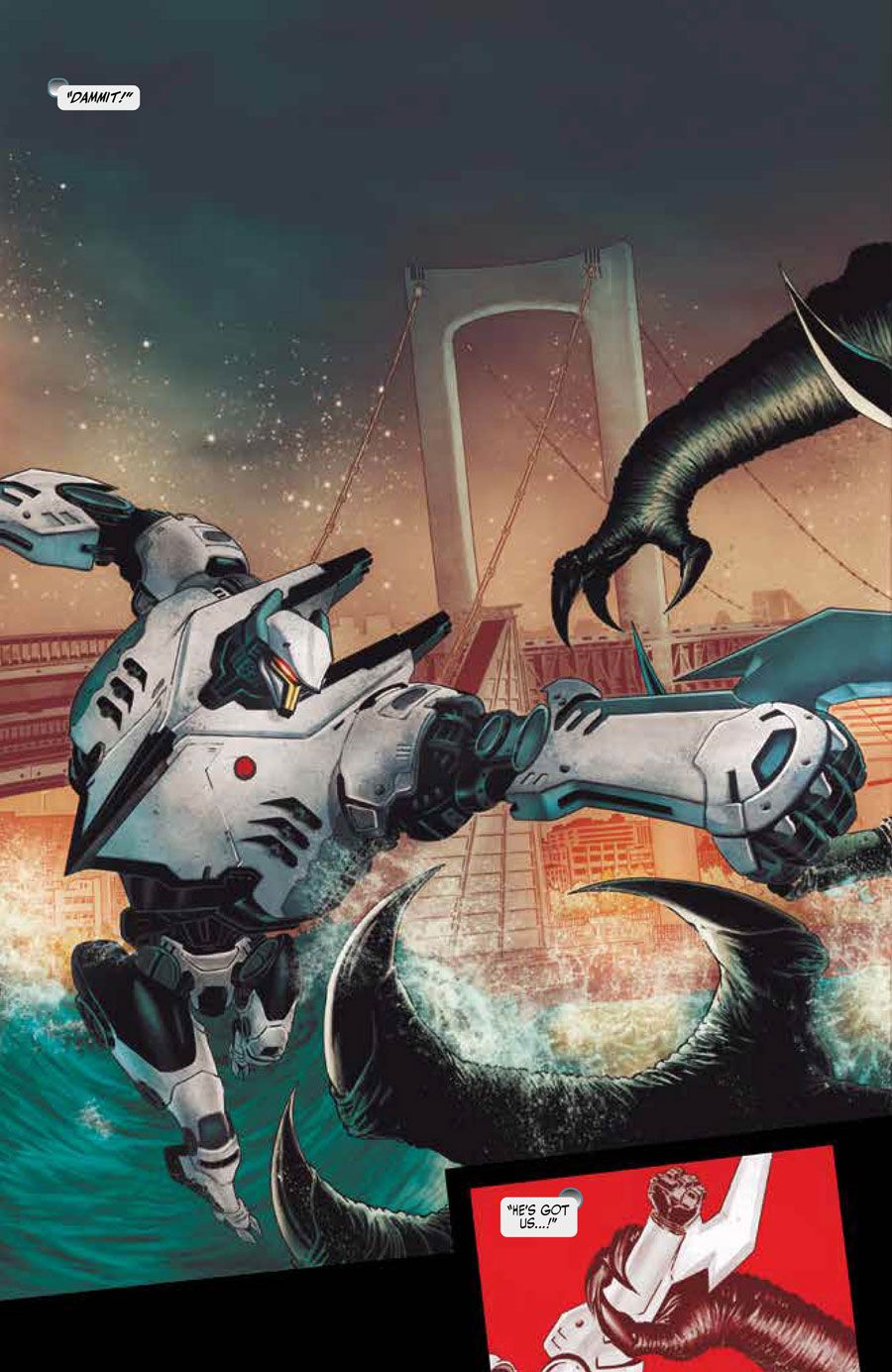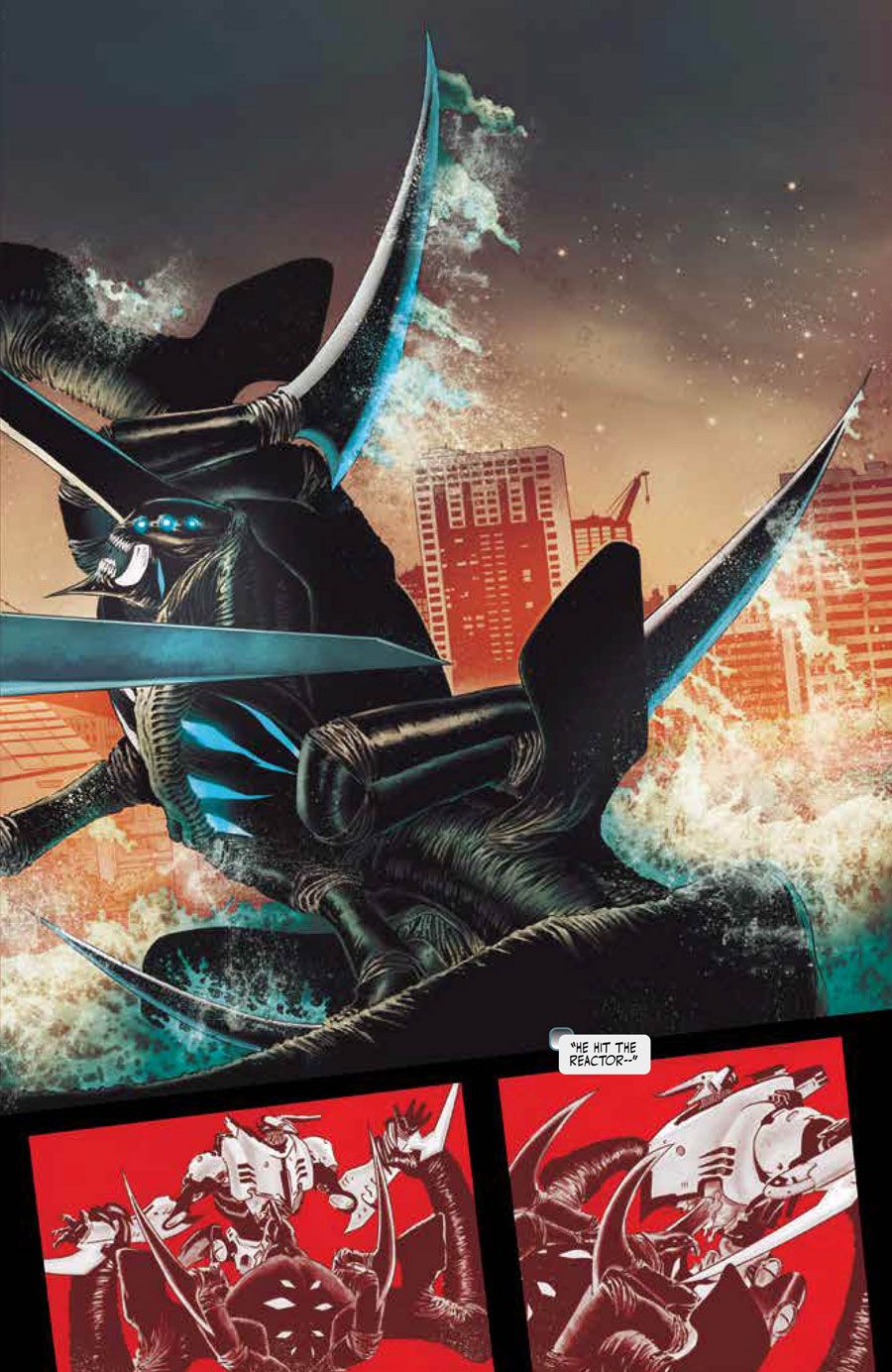It takes a certain set of skills to pilot a Jaeger -- skills and a proper partner. Thankfully, writer Joshua Hale Fialkov has both.
Teaming with artist Marcos Marz, Fialkov takes control of pilots, Jaegers and Kaiju alike in "Pacific Rim: Tales from the Drift," an all-new comic book series from Legendary. Tying into the blockbuster film by Guillermo del Toro, the series place in the early days of the war between humans and the recently emerged Kaiju monsters. As such, humanity has yet to discover what they learned about the creatures in the film, which in turn allows the writer to really showcase the dangers of these monsters as they threaten the wholly unprepared human race.
Del Toro Submits "Pacific Rim 2" Script, Budget to Execs for Consideration
Fialkov spoke with CBR News about the project, the thrill he had in getting access to the "Pacific Rim" bible, creating Jaegers and Kaiju alike and the one condition in his deal to do the project that really pleases his inner child.
CBR News: Where in the timeline of "Pacific Rim" does this story take place?
Joshua Hale Fialkov: We're taking place before the bulk of the movie. It actually even takes place before the top of the movie, when you see what happens to Raleigh and his brother. It's early in the war, and we're at a place when the Jaegers are just getting their footings. It's between "Tales of Year Zero" and the movie.
That would seem to allow you to do some cool stuff, like create some new Jaegers and Kaijus.
Yeah. I think there's two Jaegers that I created that haven't been anywhere before, but our main Jaeger is Tacit Ronin, who is by far -- as much as I love Gipsy Danger and Cherno Alpha -- the coolest design. It's like a little samurai. There's a fantastic toy that says on it, "Not for children under 16," which is 100 percent true, because it has gigantic steel blades on it that are terrifying. So, I have Tacit Ronin who is in the movie for literally a shot.
But, yeah, our pilots are two brand new pilots. It's a husband and wife team, and what we learn over the course of the first issue is that this husband and wife team started out as far away from that as humanly possible. They are two people on two completely opposite sides of the world, with two opposite goals. What we get to see through the course of the story is how being a pilot, and how the trauma of the Kaiju and what the Kaijus bring to the world, brings people together -- not just in terms of the entire world, but even person to person.
So we're seeing how their relationship develops, and how the bond then allows them to become better pilots?
Yes. I don't want to spoil it, because I think we did it in a pretty cool way, but you get to see, through the use of the technology of "Pacific Rim" and the Jaeger tech, you get to see all stages of their relationship all at once while still being a linear, full-war fight that's going on.
What about the Kaijus? Where did the designs come from? It seems like it'd be a ton of fun to create those.
They are a ton of fun. I got access when I started -- amongst the many joys of working on this project -- I got access to their bible. The bible has a very strict logic about how everything in the universe works, how all the different pieces fit together. From that, you learn how to build a Kaiju. The gimmick of Tacit Ronin is that it's fast. It's light on its feet, it's fast and it has these blades. You imagine it being like a samurai duel, when the samurais run past each other. So, how do you come up with a Kaiju that they can't stop? What's the Kaiju that counters that? It's this fun thing where you get to create little supervillains. When you create a supervillain in a superhero comic, you're trying to find a supervillain who is diametrically opposed in some way to the hero. I'm super lucky in that I have Marcos Marz, who is a buddy on mine on the art. Marcelo Maiolo is coloring, and the two of them just have these fabulous imaginations. From that, you get Kaijus that, while they are very much in line with the movie, they also feel wholly unique and like something you haven't seen before.
One of the cool things in the movie is the idea that as the Kaijus are evolving. Because we're taking place before that, we don't quite know they're evolving. We're still learning the rules, we're still learning how they work, so they behave in ways we don't expect, necessarily. My favorite is one called Thunderhead, that is super awesome, and one called Ragnarok. Those are the two I love the most in the book.
In the movie, you see these further and further advanced Kaiju that come out, but since this takes place before all that and it's near the beginning of the war, even a lower-level Kaiju is a big threat.
Right. We're still learning tactics. We're a few years into the war, but the thing is, even just the fact that they're getting bigger is enough of a challenge. But on top of that, they're also uniquely suited to who they're fighting. They're coming out during the fight, and we just have to try and keep up. The fun thing about doing a story set before the movie rather than after, is that I love wartime stories and stories about wartime sacrifice and how war has this horrific effect. That's one of the most powerful stories, whether you're telling a superhero story or a real-world story. I work on a medical drama on NBC now, and even there, the thing you're always trying to cultivate is that we're at war. There's a war going on, and we're in the middle of it. It allows people to speak in a truer way and it allows peoples to reflect on who they are and bring that out into the world.
To really know someone, put them through trauma and you see what their real character is.
Right. The axiom I use for every story I tell is, "What is the worst thing that could possibly happen? On the worst day of your life, what is the worst thing that can happen to you?" That is the jumping off point for what you do. What's great about "Pacific Rim," and what makes "Pacific Rim" work so well, is that you're already talking about the worst thing that could happen. The world thing that could happen has happened. Now, we're just frantically trying not to get squished. When we meet our pilots before they were pilots, you get to see how the fight is going. They want to be fighting, but they also see how sort of futile it is, because what can two individuals do when this going on? Over the course of the story, you get to see how these two people accept that mission.
There's clearly a lot of anime influence in the "Pacific Rim" world, mythology and film. Are you a fan of anime?
I stopped reading American comics when I was 12 or so, and the whole time, I continued to read manga and I continued to watch anime. As a kid, I loved Kaiju movies. I loved Godzilla. I loved all that stuff. As a kid, I had the Japanese version of the game of Ultraman, which is a giant superhero who fights giant monsters. I love it. I love it for so many reasons.
All that stuff sort of speaks to two things. One is that you're talking about a force of nature. Keeping it with Legendary, the Legendary Godzilla is a great example of that. While it's all of mankind squirming to try and put a stop to things, at the end of the day, the two forces of nature are going to do what two forces of nature are going to do. What makes "Pacific Rim" special and different is that it's not that. Man comes together. I find it to be more humanistic. It's about the idea that, despite all the challenges that constantly face us as a species, when we put our heads together, we can do amazing things.
There's the heart and the emotion of the story, which is, of course, very important and vital. However, a part of the awesomeness of "Pacific Rim" are the giant fights, so I definitely want to talk about that.
[Laughs] Our policy on the book was pretty much 50/50. For every page of emotional stuff, there is definitely a page of giant monster hitting giant robot. We really made it a point. One of the wonderful things about comics as a medium, that makes it so different from every other medium on Earth, is that you can do both simultaneously in a way that's actually remarkably hard to do in other mediums. Because you have the ability to slow down the story and pace as you need, you can deliver character-work inside those action moments. In a film setting, where everything is so heightened and there is so much going on, you don't have the space to do that.
For example, we spend a lot of time in the book with the Drift and what the Drift does to people and what the Drift says about the Jaeger pilots. That's something that's certainly in the movie, but you don't have a lot of room for it, because you've got to get to the stuff that's showing and not telling, and a lot of that stuff is telling. In comics, you have the freedom to tell a little bit more, and do it while showing. You can make visually beautiful. Probably my favorite moment in the book is in the second issue, where we get to see what it looks like when two people who Drift harmoniously, and have Drifted for so long, have essentially built their Drift state. They've build the place that is their shared world that they go to in order to do it properly. Getting to do that and play with that has been one of the great pleasures for me.
You talked about these fights we're going to see, and how you were a fan of this genre growing up. Scripting the battles, was it like letting your inner child run wild?
I will tell you that part of my deal to write the book, was that Legendary gave me a lot of toys. [Laughs] I have a whole shelf of Kaijus and Jaegers, including a Tacit Ronin -- and I do have an Ultraman that I get to have team up with him sometimes. So, you know, it really is. I don't do a lot of work for hire -- this is actually the only work-for-hire book I'm doing right now. And part of the reason I'm doing it is because I love "Pacific Rim" so much and I wanted to play with those toys so badly.
Both literally and figuratively.
Yes. [Laughs]
"Pacific Rim: Tales from the Drift" #1 is on sale now.

